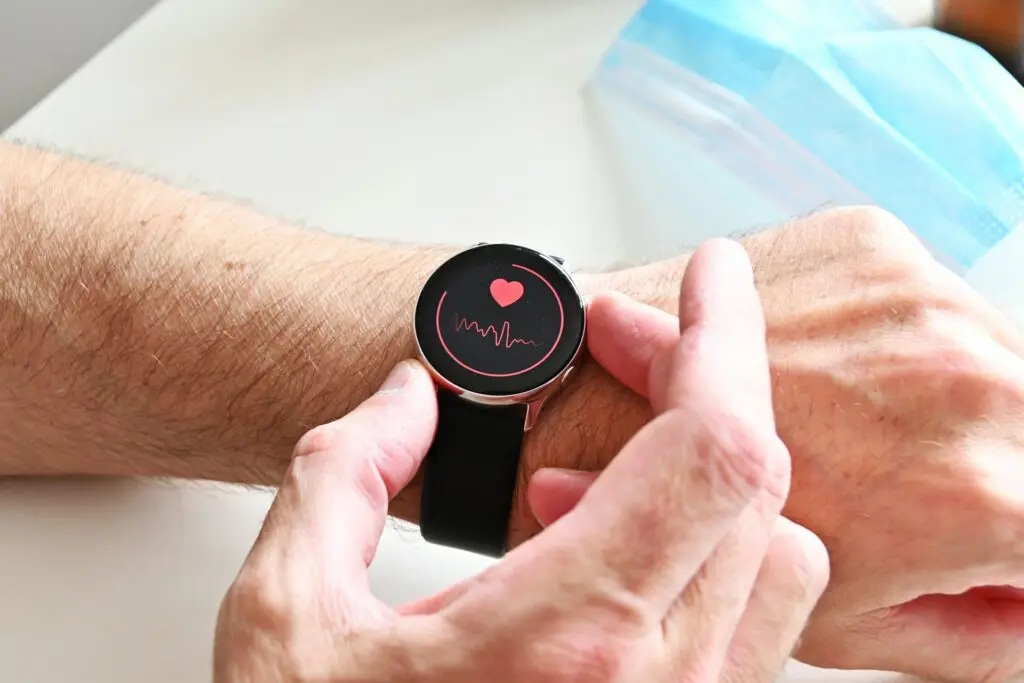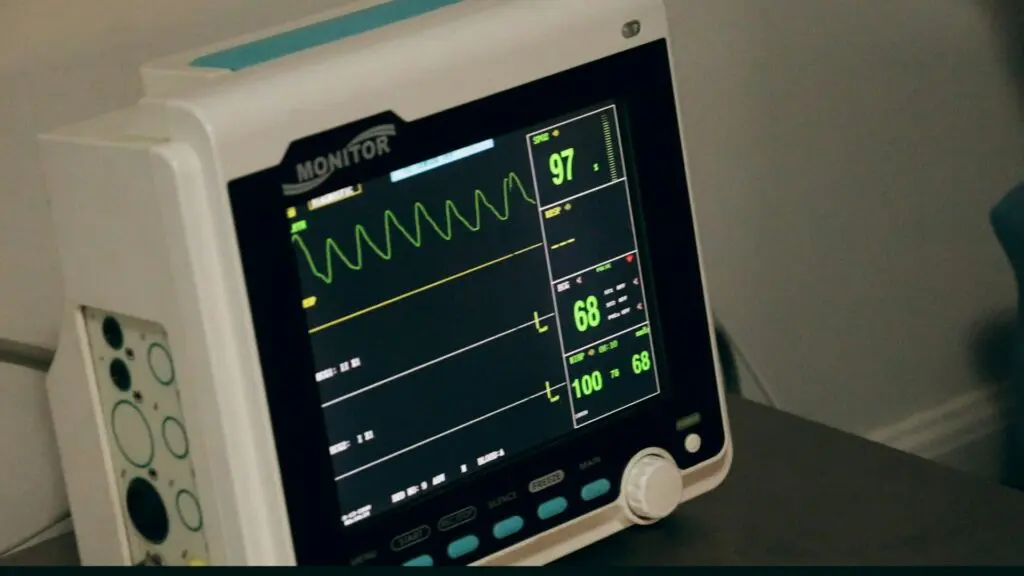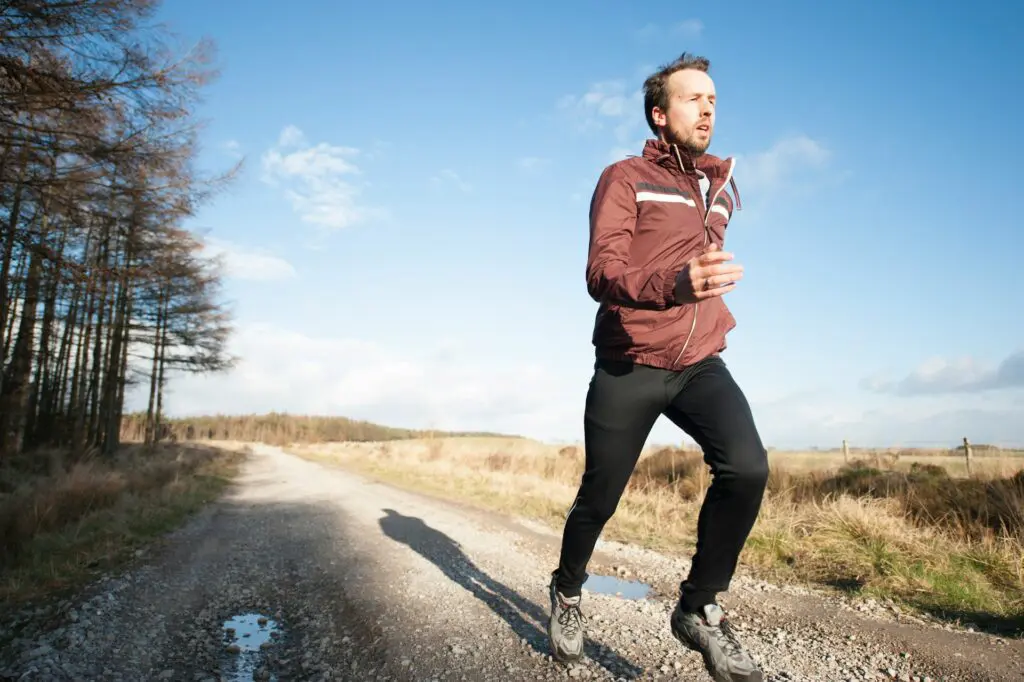Your heart doesn’t beat like a metronome – it changes its rhythm slightly between beats. This changing pattern is called Heart Rate Variability (HRV), and it can tell us a lot about our health. As technology gets better, we can now track HRV at home instead of just in hospitals. This guide will help you pick the best HRV monitor to track your health and fitness.

Understanding the Science | How HRV Monitors Work | Essential Features | Common Limitations of Popular HRV Monitors | Top 5 HRV Monitors | FAQs | Key Takeaways
Understanding the Science Behind the Best HRV Monitors
Think of your nervous system like a car with two pedals:
- Gas Pedal (Sympathetic Nervous System): This gets you ready for action by speeding up your heart and sending blood to your muscles when you need to move fast.
- Brake Pedal (Parasympathetic Nervous System): This helps you rest and recover by slowing things down and helping with tasks like digestion.
A higher HRV usually means better fitness and less stress. Lower HRV might warn you about:
- Too Much Stress: When you’re stressed for a long time, your HRV can drop by up to half its normal level.
- Poor Sleep: Bad sleep can lower your HRV by about a third compared to when you’re sleeping well.
- Too Much Exercise: Working out too hard without enough rest can drop your HRV by 20-40%.
- Getting Sick: Your HRV often drops 1-2 days before you feel sick.
- Need More Rest: Not resting enough between workouts can lower your HRV by 15-35%.
How the Best HRV Monitors Track Your Health
Daily Health Insights
Your HRV monitor can tell you:
- How well your stress-relief activities work
- Whether you’ve recovered from workouts (85% accurate at predicting recovery)
- How well you’re sleeping
- How your heart health is improving (regular exercise can boost HRV by 15-40%)
- Your mood and stress levels
Athletic Performance
Athletes can use HRV to:
- Plan workout intensity
- Avoid training too hard
- Check if recovery methods are working
- Get ready for races
- Plan training cycles
Health Warnings
HRV changes can warn you about:
- Upcoming illness
- Need for rest
- Long-term stress (can lower your normal HRV by 63%)
- Heart health issues
- Mental health (HRV patterns match up with mood changes)
Essential Features of the Best HRV Monitors
1. Accuracy Compared to Medical-grade ECG
Think of medical-grade ECG as the gold standard – it’s what doctors use in hospitals. The best HRV monitors should match these hospital devices at least 95% of the time. The company should be open about their testing and show proof that their device works well in different situations, like during exercise or rest. Just like you wouldn’t want a bathroom scale that gives different weights each time you step on it, your HRV monitor should give reliable readings day after day.

2. Peer-reviewed Research Validation
A good HRV monitor should have scientific research backing it up. This means independent scientists have tested the device and published their findings in scientific journals. Look for devices that have multiple studies supporting them, not just one test. The company should make these research results easy to find and understand on their website or in their product materials.
3. High Sampling Rate
Sampling rate is how many times per second your device measures your heart beats. Think of it like a video camera – the more frames per second, the smoother the video. Medical devices sample at 1000 times per second (1000 Hz), while good consumer devices should sample at least 250 times per second. A higher sampling rate means your device catches more detailed information about your heart rhythm. Lower sampling rates might miss important variations between heartbeats.
4. R-R Interval Detection Accuracy
R-R intervals are the precise time gaps between your heartbeats. Getting these measurements right is crucial for accurate HRV data. Good devices should measure these intervals with precision down to a millisecond (that’s one thousandth of a second). They should also be able to filter out “noise” from things like movement or poor skin contact. It’s like having a good pair of noise-canceling headphones – you want to hear the music clearly without interference.
5. Published Error Rates
Error rates tell you how often the device might be wrong and by how much. A good HRV monitor should be upfront about its accuracy limits. For example, if a device claims to be accurate within 2% of true heart rate values, this should be backed up by real testing data. Look for devices that share this information openly and explain what might affect accuracy, like intense exercise or skin temperature.
Common Limitations of Popular HRV Monitors
While smartwatches like Apple Watch and Fitbit are convenient and do many things, they have some big drawbacks when measuring HRV:
Light Sensor Limitations
Smartwatches use light to measure your heart rate through your skin, which isn’t as accurate as chest straps that measure electrical signals. These wrist sensors are usually off by 15-20% compared to medical devices, especially when you’re moving around.
Movement Problems
Any time you move your wrist, the watch can lose contact with your skin and give wrong readings. Even simple things like typing or walking can make the readings up to 30% less accurate than chest straps.
Slower Measurement Speed
Most smartwatches take measurements 100-200 times per second, which is slower than the recommended 250 times per second needed for good HRV readings. This means they might miss small changes between heartbeats that matter for HRV.
Simplified Calculations
To save battery life and processing power, smartwatches use simpler math to calculate HRV. They often average readings over longer periods, which means they might miss important short-term changes in your heart rhythm.

Top 5 HRV Monitors: The Ultimate Countdown
Let’s count down the top five HRV monitors available today, starting with number 5 and building up to our top recommendation. Each device has been thoroughly tested and evaluated based on accuracy, features, and real-world performance.
5. 4iiii Viiiiva
Best For: Cyclists and triathletes
- Bridge Technology: Works with both old and new devices using ANT+ and Bluetooth
- Battery Performance: Operates for up to 200 hours on a single battery
- Very accurate: Less than 1% error in heart rate readings
- Water Protection: Features IPX7 water resistance, allowing submersion up to 1 meter for 30 minutes
- Weight and Design: Weighs just 15 grams with a profile of only 8mm thick, making it the most lightweight HRV monitor in our top 5
- Cross-Platform Integration: Works seamlessly with over 50 different fitness apps including Zwift, TrainerRoad, and Strava, storing up to 65 hours of workout data for offline syncing
4. Garmin HRM-Pro Plus
Best For: Swimmers and runners
- Running Dynamics: Captures six different running metrics including ground contact time, vertical oscillation, and stride length, providing advanced gait analysis
- Swimming Capabilities: Stores and forwards heart rate data during swim activities up to 5 ATM (50 meters) water resistance, automatically syncing when you’re back in range of your device
- Dual-Band Connectivity: Simultaneously transmits real-time heart rate data through both ANT+ and Bluetooth Smart
- Impact Resistance: Built with a fully sealed, softened edge design tested to withstand impacts up to 2.4 meters, backed by Garmin’s robust 1-year warranty
3. Oura Ring Gen 3
Best For: Sleep and recovery monitoring
- Easy to Wear: Fits on your finger instead of your chest or wrist
- Tracks: Heart rate changes, how well you sleep, how ready your body is for exercise
- Sleep Architecture Analysis: Really good at measuring sleep patterns
- Continuous Monitoring: Provides research-grade accuracy for 24/7 heart rate monitoring
- Battery Efficiency: Delivers 4-7 days of continuous use on a single charge, with fast charging capabilities
- Durability Standards: Crafted from titanium with a diamond-like carbon coating (DLC), water-resistant to 100 meters, and tested to withstand extreme temperatures
- Biometric Processing: Samples motion and heart rate data 50 times per second, processing over 250MB of data daily through its proprietary algorithms
2. Garmin Venu 3
Best For: Active lifestyle enthusiasts
- Looks Like a Regular Watch: Features a bright, colorful 1.4-inch AMOLED display with high pixel resolution and always-on capability, offering exceptional readability even in bright sunlight
- Advanced Sleep Metrics: Provides detailed sleep stage analysis including REM cycles, along with blood oxygen monitoring and sleep coaching
- Health Monitoring Suite: Combines continuous heart rate monitoring with stress tracking, energy levels, and respiration rate
- Training Features: Includes built-in animated workouts, adaptive training plans, and real-time stamina insights that predict performance decline during activities
- Extra Features: Stores music, lets you pay from your wrist
1. Polar H10
Best For: Professional athletes and medical research
- Data Accessibility: Provides full access to raw HRV data through Bluetooth and ANT+
- Clinical Precision: Achieves an industry-leading 99.6% correlation with medical-grade ECG equipment
- Sampling Accuracy: Provides the highest resolution HRV data available in a consumer device.
- Durability Engineering: Constructed with a silicone grip pattern and non-slip electrodes that maintain accuracy for over 500 hours of tough workouts, including swimming
- Power Efficiency: Functions for up to 400 hours of training on a single battery, with smart power management
- Comfortable: Comfortable to wear for long periods
Common Questions About HRV Monitors

When should I check my HRV?
Check your HRV first thing in the morning, within 5 minutes of waking up. Stay lying down and breathe normally. Do this at the same time each day because your HRV changes throughout the day. Most people only need one morning reading, though some athletes check more often.
What’s a normal HRV number?
HRV usually falls between 20 and 200 milliseconds. Athletes tend to have higher numbers (60-150), while older adults usually have lower numbers (15-45). Instead of comparing yourself to others, watch how your own numbers change over time.
Can HRV show if I’m exercising too much?
Yes! If your morning HRV stays low (more than 10% below normal) for three or more days, you might be training too hard. When this happens along with feeling tired and sleeping poorly, it’s time to take extra rest days. See more here on how to get better sleep.
How well do smartwatches measure HRV?
Smartwatches are about 70-80% as accurate as chest straps when you’re sitting still, but they’re less accurate when you move. They’re fine for general health tracking, but serious athletes and people tracking their health should consider using chest straps or medical devices.
Should I get a special HRV monitor or use my smartwatch?
It depends on what you want to track. For basic health tracking, a smartwatch works fine. Athletes should get chest straps for better accuracy. If you’re tracking a health condition, get a medical-grade device. Think about how accurate you need the readings to be, how often you’ll use it, and your budget.

Best HRV Monitor: Key Takeaways
Picking the right HRV monitor means thinking about what you need it for, how much you want to spend, and what features matter most to you. Even though the most expensive monitors are the most accurate, mid-range options can still give you helpful information about your health.
Share how you use HRV monitoring in the comments below. What works best for you? Sign up for our Gorilla Gazette newsletter to get more detailed reviews and health tech tips to help you stay healthy.
Remember, the best HRV monitor is one that fits into your daily routine while giving you the accurate information you need to make better health choices.
Related Resources
- Cool souvenirs from Hawaii made easy! Skip the luggage hassle and shop our curated list of 15 island favorites from the comfort of home.
- Explore our comprehensive guide to cat accessories, covering everything from carriers to toys. Learn what your feline needs for a happy, healthy life.
- Unsure which is the best battery for your RV adventures? Our comprehensive review breaks down top options, helping you power up with confidence.






Leave a Reply